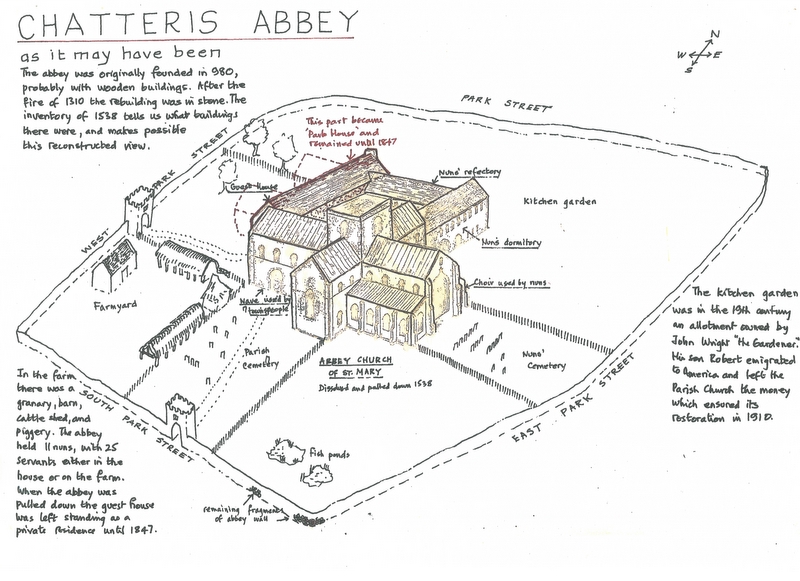Chatteris (Cetriz) Nunnery
 A small nunnery was founded at Chatteris between 1006 and 1008 AD by Eadnoth, 1st Abbot of Ramsey Abbey, at the request of his sister Alfwen, wife of Athelstan, ruler of East Anglia. She endowed it with an estate at Slepe (St Ives), which their father Athelstan Mannesson had bequeathed to her, on the condition that it passed to Ramsey Abbey at her death. It is probable that Eadnoth agreed to Alfwens request, in gratitude for Athelstans substantial gifts to Ramsey, and as a further token of respect, he appointed Alfwen as the first Prioress of the new house. At this time Alfwen would not have been a young woman and would have ruled the house in the tradition of a noble Saxon Lady.
A small nunnery was founded at Chatteris between 1006 and 1008 AD by Eadnoth, 1st Abbot of Ramsey Abbey, at the request of his sister Alfwen, wife of Athelstan, ruler of East Anglia. She endowed it with an estate at Slepe (St Ives), which their father Athelstan Mannesson had bequeathed to her, on the condition that it passed to Ramsey Abbey at her death. It is probable that Eadnoth agreed to Alfwens request, in gratitude for Athelstans substantial gifts to Ramsey, and as a further token of respect, he appointed Alfwen as the first Prioress of the new house. At this time Alfwen would not have been a young woman and would have ruled the house in the tradition of a noble Saxon Lady.
The nunnery, dedicated to the Blessed Virgin Mary, never again received such substantial donations and was really to small to remain independent for long, despite the protection afforded it by being a daughter house of Ramsey. The Domesday Survey taken after the Conquest, shows how few estates the nunnery had.
They included the manor of Kersey in Suffolk, as well as land in Hertfordshire at Barley, and in Cambridgeshire at Foxton, Burwell, Barrington, Shepreth, Over, and Orwell, in all about 1632 acres. During the next 200 years the nuns received virtually no further land grants, and few other gifts.
Eventually Henry 1 gave the nunnery to the monastery at Ely in order that they should support and maintain it, also given along with all its possessions were the feudal rights to hold as freely as any other lands pertaining to the see.
Although in 1535 the nunnery was returned with the clear value of only £97 3s 4d, in August 1536 the nunnery of St Mary of Chatteris had licence to continue unsupressed, the Act of 27 Henry VIII not withstanding; Anne Gayton to remain as abbess.
The house survived for almost exactly two years longer; then on, 3rd September 1538, the commissioners, Legh and Phillip, took the surrender of Anne Gayton and her ten nuns and on the same day Legh wrote to Cromwell that he had put Walter Cromwell in possession of the nunnery, to hold for the King; but that there were fourteen families in the town ‘which kept their parish church in the nunnery’ and, although there was another parish church to which he thought it better that they should be transferred, he would therefore wait Cromwell’s pleasure before taken any further action about the conventual church.
On their departure the abbess received £3 6s 8d, Ellen Smith, the prioress and each other nun £2. The warrant for their pensions was dated 17th February 1539, under this Anne Gayton received £15 a year, the prioress and one nun £4, six of the nuns £2 13s 4d, and the other two 40s each. In 1555 the late abbess, prioress and four nuns were still drawing their pensions. (Ref 25)
